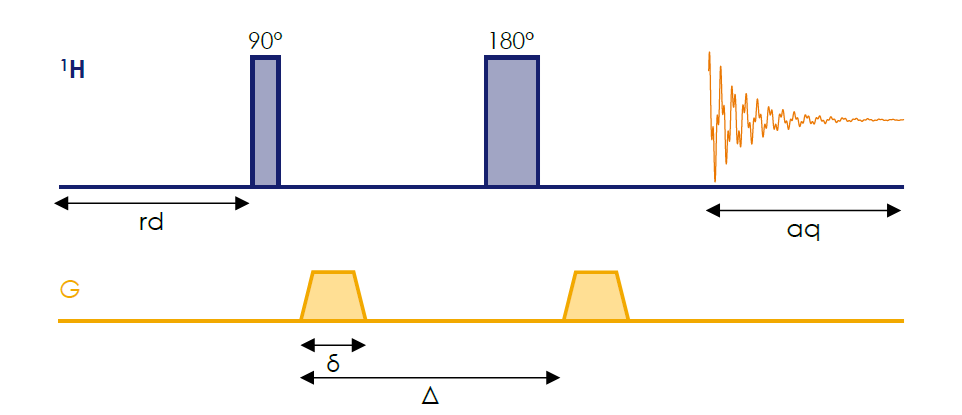In this Interview, AZoM talks to Dr. Dave Ellis about benchtop NMR, its advantages over high-field, and applications of the X-Pulse.
Could you introduce yourself and describe your main areas of work?
I am Dr. Dave Ellis and work in the Heriot-Watt University chemistry department. I teach chemistry, manage the NMR facility, and have set up an MSc in Analytical Science for the Biosciences Industries, which uses a lot of NMR. I have many research interests in NMR and, more broadly, analytical science.
How do you use NMR in your facility?
Most of the uses of NMR in our facility involve using NMR for structure determination. If you carry out synthetic chemistry and are trying to make new compounds, you must find out what they are. NMR is the most powerful tool for that.
My particular interest is in complex mixture analysis. The project that we are currently running involves using nuclear magnetic resonance (NMR) to analyse potential alternatives to peat in scotch whiskey manufacturing. Peat is a threatened resource, so we are looking at ways to create the same smoky flavours in Scotch Wiskey but from a different source.

Image Credit: Shutterstock // JulijaDmitrijeva
How do benchtop NMR and High Field compare?
We use both benchtop and High Field NMR. High Field NMR is beneficial if you are looking at complex mixtures and want to try and understand the detailed composition of those mixtures. However, if you are only interested in certain key markers you can identify on benchtop NMR, why not use benchtop?
The advantages of benchtop NMR are quite well-established now. The spectrometer is smaller and more mobile - ours sits on a trolley, and we can move it around. We use benchtop NMR frequently, but I would also like to highlight the application to teaching.
How do you use NMR in teaching and training?
As I mentioned, we have set up an MSc in analytical science, and NMR is a big part of that. Benchtop is also part of that. We are very grateful that Robin Blagg from Oxford Instruments visited us a few weeks ago to talk to our Masters students about the applications of benchtop NMR. We went down to the spectrometer, played around with it, and the students ran some samples, which they were very excited about.
You can gather students around this relatively small instrument which then asks them to do specific optimization processes such as tune the magnet and shim the sample before running the experiment. It is an excellent way of training people in NMR, in particular, teaching them how NMR works.
Please can you tell us about the Oxford Instruments X-Pulse and its features?
I like pulse-field gradients. We have carried out a lot of diffusion NMR here at Heriot-Watt for various applications; obviously, gradients are required.
I was excited to see that the new SpinFlow release for the X-Pulse has one-dimensional diffusion-ordered spectroscopy (DOSY) sequences available. It is going to be a great way forward.
X-Pulse is easy to use, the hardware is easy to understand, and the software is intuitive. Generally, if we have users interested in benchtop, training them will take five minutes. Students are very good at navigating simple software, so they find SpinFlow easy to use.

Image Credit: Gradient Image // Oxford Instruments Magnetic Resonance
How has benchtop NMR enabled innovation at your facility?
We have set up a lab at Heriot-Watt University called the Continuum Lab, which is all about flow chemistry and reaction monitoring. My view, and not only my view, is that chemistry is moving away from the old-fashioned batch way of synthesis where you make things in round-bottomed flasks, put them through columns, and crystallize them. It is now moving towards preparing things in flow.
One of the revolutions of the last few years has been the ability to monitor chemical reactions or degradations in flow continuously. The only way you can do that is through benchtop NMR.
Are you working on any exciting new projects utilizing benchtop NMR?
I would like to mention two projects in the area of fluorine NMR. I think fluorine NMR and benchtop go together very well.
One project involves the tagging of biomolecules using fluorine-19. Our idea is to take human blood and react it with fluorinating agents to tag specific molecules within that blood matrix with fluorine.
The spectrum you will get will be much simpler than the proton spectrum. Then you can use the fluorine NMR, potentially in medical diagnostics, for screening.
The second project involves the degradation of per- and polyfluorinated alkyl substances (PFAS). PFAS are now believed to be major risks to human health and ecological receptors.
There have been studies using benchtop to look at the degradation of PFAS using chemical reagents, but our idea is to try using microbes. That would be bioremediation, potentially even in soil. You can use fluorine NMR on a benchtop to monitor the bioremediation of PFAS.
About Dr. Dave Ellis
 Dr. Dave Ellis works in the chemistry department at Heriot-Watt University. He teaches chemistry and manages the NMR facility. Recently, he set up an MSc in Analytical Science for the Biosciences Industries. His research interests lie in NMR and, more broadly, in analytical science.
Dr. Dave Ellis works in the chemistry department at Heriot-Watt University. He teaches chemistry and manages the NMR facility. Recently, he set up an MSc in Analytical Science for the Biosciences Industries. His research interests lie in NMR and, more broadly, in analytical science.

This information has been sourced, reviewed and adapted from materials provided by Oxford Instruments Magnetic Resonance.
For more information on this source, please visit Oxford Instruments Magnetic Resonance.
Disclaimer: The views expressed here are those of the interviewee and do not necessarily represent the views of AZoM.com Limited (T/A) AZoNetwork, the owner and operator of this website. This disclaimer forms part of the Terms and Conditions of use of this website.